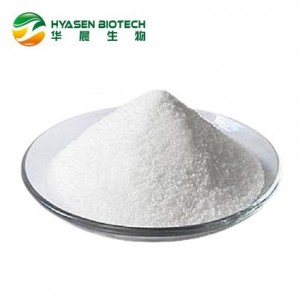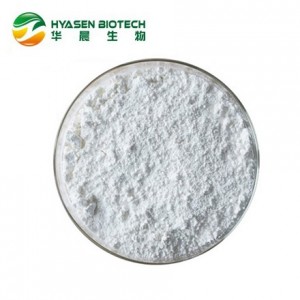
FastAmpli qPCR Probe Premix plus-UNG
FastAmpli qPCR Probe Premix plus-UNG is specially developed for the lyophilization process. It provides components, e.g. rapid Taq DNA polymerase, uracil DNA glycosylase (UNG), MgCl2 , dNTPs (with dUTP instead of dTTP), and stabilizers, for quantitative PCR (qPCR). With the genetically modified rapid amplification DNA polymerase, it is possible to complete PCR amplification within 30 minutes. The rapid DNA polymerase has also been novelly modified to obtain a hot start version. It blocks polymerase activity at ambient temperatures, and thus prevents extension of nonspecifically annealed primers. This reagent is not only suitable for regular procedures of conventional fluorescent quantitative PCR instruments to obtain a good standard curve in a wide quantitative range, but also suitable for rapid PCR amplification instruments for high-sensitivity and rapid amplification. This reagent uses proprietary reaction buffer for qPCR with well-optimized configuration and UNG/dUTP system, and UNG prevents amplification of carryover PCR products. This reagent is compatible with most fluorescence quantitative PCR instruments from manufacturers such as Applied Biosystems, Eppendorf, Bio-Rad and Roche. After lyophilization, the reagent maintains good stability.
Reagent Component
1. FastAmpli Premix-UNG contains following:
2. Rapid Taq DNA polymerase
3. PCR Buffer
4. dNTPs (with dUTP instead of dTTP) and UNG
5. lyoprotectant
6. Stabilizer
7. MgCl2
Storage Conditions
Can be stored at -20℃ for Long-term, at 4℃ for up to 3 months. Mix well before use and Avoid
frequent freeze-thaw.
Protocol
|
Step |
Temperature |
Regular PCR Procedure |
Fast PCR Procedure |
cycles |
|
Duration |
Duration |
|||
|
Reverse Transcription |
50℃ |
2 min |
2 min |
hold |
|
Polymerase activation |
95℃ |
1~5 min |
30 s |
hold |
|
Denature |
95℃ |
10-20 s |
1~3 s |
40-50 |
|
Annealing/Extension |
56-64℃ |
20-60 s |
3-20 s |
PCR Reaction System Preparation
|
Composition |
Volume per |
Volume per |
Final |
|
2× Fast qPCR Probe PreMix-UNG |
12.5 µL |
25 µL |
1× |
|
25×Primer-Probe Mix 2, 3 |
1 µL |
2 µL |
1× |
|
Template RNA 4 |
—— |
—— |
—— |
|
ddH2O |
To 25 µL |
To 50 µL |
—— |
Notes
1. This system can be lyophilized and already contains lyoprotectant ingredients.
2. Typically 0.2 μM primer concentration yields better results; if reaction performance is poor then adjust primerconcentration between 0.2~1 μM range accordingly. Typically probe concentrations are optimized within the range of 0.1~0.3μM. Concentration gradient experiments may be performed to find the best combination of primers and probes.
3. When using a fast PCR procedure, increasing the concentration of primers and probes may result in better amplification results, and their ratio should be optimized accordingly.
4. The copy number of target genes contained in different types of templates differs; therefore, it may be necessary to perform gradient dilution experiments to determine the optimal amount of template addition.
When the system is used for lyophilization, prepare the system as following
|
Composition |
Volume per Reaction |
|
2X Fast qPCR Probe PreMix-UNG |
12.5 µL |
|
25×Primer-Probe Mix |
1 µL |
|
ddH2O |
To 18~20 µL |
Lyophilization system preparation
|
Procedure |
Temp. |
Time |
Condition |
Pressure |
|
Freezing |
4℃ |
30 min |
Hold |
1 ATM |
|
-50℃ |
60 min |
Ramp |
||
|
-50℃ |
180 min |
Hold |
||
|
Primary Drying |
-30℃ |
60 min |
Ramp |
Ultimate Vacuum |
|
-30℃ |
720 min |
Hold |
||
|
Secondary Drying |
25℃ |
60 min |
Ramp |
Ultimate Vacuum |
|
25℃ |
300 min |
Hold |
This cycle protocol is suitable for in-situ lyophilization. If you need to produce lyophilized microspheres, please contact us for technical support. The parameters provided are for reference only and should be optimized to different lyophilized product formats and machines.
Guidelines for lyophilized products (in PCR tube)
1. Centrifuge the lyophilized powder instantaneously.
2. Add the template to the lyophilized powder, and add water up to 25 μL.
3. Mix and centrifuge, and then proceed with PCR amplification
* It is recommended to use Biori integrated mixer-centrifuge CM-8 or CM-8 Plus for standardized mixing and centrifugation operations.
Quality Control
1. Function detection: sensitivity, specificity and repeatability of qPCR.
2. No exogenous nuclease activity: no exogenous endonuclease and exonuclease pollution.
Technical Information:
1.Amplification rate of rapid DNA polymerase is no less than 1kb/10s. Different PCR instruments have different heating and cooling speeds, temperature control modes and thermal conductivity, thus optimization of your primer/probe concentration and running method in combination with your specific fast PCR instrument is essential.
2. This product performs wide applicability, and it is suitable for high-sensitivity molecular diagnosis.
3. Three step PCR method is recommended for primers with low annealing temperature or for amplification of long fragments over 200 bp.
4. Since different amplicons have different utilization efficiency to dUTP and different sensitivity to UNG, the reagents should be optimized if the detection sensitivity decreases when using UNG system. Please contact us for technical support if needed.
5. To avoid amplification of carryover PCR products, dedicated experimental area and pipette are required for amplification. Operate with gloves and change frequently and do not open the PCR tube after amplification.














